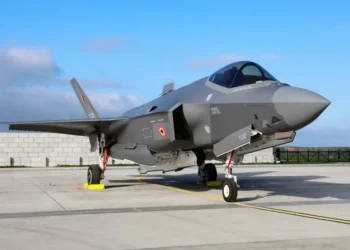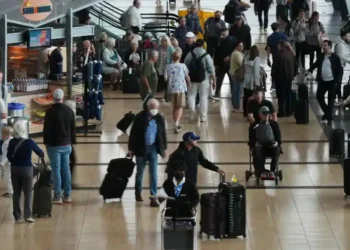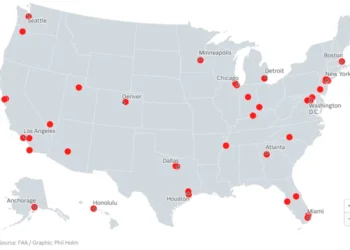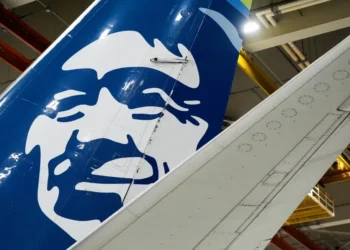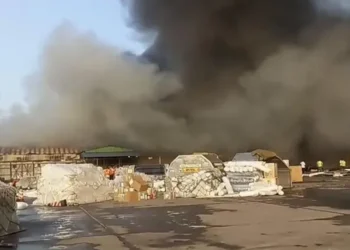Global Conflict Is Reshaping the Skies — And Airlines Are Scrambling to Keep Up
Take a look at a live flight tracker, and one thing jumps out right away: the gaps.
Huge, empty zones in the sky where planes used to fly — now ghostly quiet. These aren’t just quirks of scheduling. They’re the real-time ripple effects of war, political instability, and even natural disasters.
From the Middle East to Eastern Europe, modern air travel is being rerouted, delayed, or canceled altogether — and the costs are stacking up fast.
Flying Around a Fight: The Cost of Conflict in the Air
The latest flare-ups in the Middle East have created fresh no-fly zones over parts of Israel, Iran, Iraq, and Ukraine, squeezing international flights into narrower corridors over Saudi Arabia, Egypt, and Turkey.
This means more fuel burned, more hours in the air, more wear on crews — and much higher costs for airlines.
“Airspace closures have become quite common,” says Brendan Sobie, a Singapore-based aviation consultant.
“It’s almost like the new normal for airlines.”
According to Tony Stanton of Strategic Air in Australia, some rerouted flights — like those from London to Hong Kong — are now taking two extra hours just to avoid conflict zones.
For long-haul jets like a Boeing 777, that can mean an extra $14,000 in fuel costs per round trip — not to mention crew overtime, rebooking headaches, and airport slot fees.
A Sky Full of Risk Assessments
Every commercial airline has a team monitoring global airspace, constantly recalculating what’s safe and what’s not. Even if a region’s airspace is technically open, some carriers might choose to avoid it if the risk feels too high.
“Pilots don’t just need to avoid war zones,” Sobie explains.
“They also need buffer zones in case of emergencies or bad weather that could force a diversion.”
In today’s world, risk isn’t limited to missiles or missiles — cyberattacks are now part of the equation, with experts warning about GPS jamming and spoofing that can mislead aircraft navigation systems near combat zones.
Traffic Jams at 40,000 Feet
With more planes in the sky than ever before, rerouting flights causes congestion elsewhere. In the Persian Gulf, for example, air traffic has tripled in just a few years.
Now, with fewer safe paths, air traffic controllers are trying to squeeze more aircraft into tighter corridors, adjusting altitudes and departure times to make it all work — but it’s not easy, or cheap.
Short Flights, Big Disruptions
While long-haul routes make headlines, shorter regional flights are often hit the hardest.
Flights from Central Asia to Gulf hubs like Dubai or Doha, which used to cross Iranian airspace, are now rerouting entirely. That means up to half the flight time spent zigzagging to stay clear of conflict.
Volcanoes: Nature’s No-Fly Zones
While war gets the attention, volcanic eruptions may be even more disruptive.
Just look at Bali, where a current eruption is affecting air routes. Or flash back to Eyjafjallajökull in Iceland (2010) — that eruption grounded over 10 million travelers and cost airlines more than $1.7 billion.
Volcanic ash isn’t just an inconvenience. It’s dangerous. It contains microscopic silica that can fuse to jet engine parts, potentially causing catastrophic failures.
“A volcano’s eruption can have much greater impacts than a conflict zone,” Stanton says.
Airlines Are Flying Blind into the Future
One of the hardest parts for airlines? There’s no end date for a conflict.
Some disruptions, like last year’s tension between Iran and Israel, were short-lived. Others, like Russia’s invasion of Ukraine, have dragged on for years with no clear timeline for resolution. Many of the rerouted paths created in 2022 are still in effect today.
And unlike weather forecasts, wars can’t be predicted or planned for — making them one of the most expensive unknowns in modern aviation.
“Running a profitable airline is not easy,” Stanton notes — and in today’s world, it’s getting harder by the mile.
The Bottom Line
Whether it’s war, volcanoes, or cyber threats, airlines are flying through a more volatile sky than ever before. What used to be rare airspace disruptions are now part of everyday flight planning.
For passengers, that might mean longer trips, more delays, and higher ticket prices.
For airlines, it’s a daily high-stakes puzzle — and the cost of getting it wrong can be sky-high.
This article was rewritten by JournosNews.com based on verified reporting from trusted sources. The content has been independently reviewed, fact-checked, and edited for accuracy, neutrality, tone, and global readability in accordance with Google News and AdSense standards.
All opinions, quotes, or statements from contributors, experts, or sourced organizations do not necessarily reflect the views of JournosNews.com. JournosNews.com maintains full editorial independence from any external funders, sponsors, or organizations.
Stay informed with JournosNews.com — your trusted source for verified global reporting and in-depth analysis. Follow us on Google News, BlueSky, and X for real-time updates.


